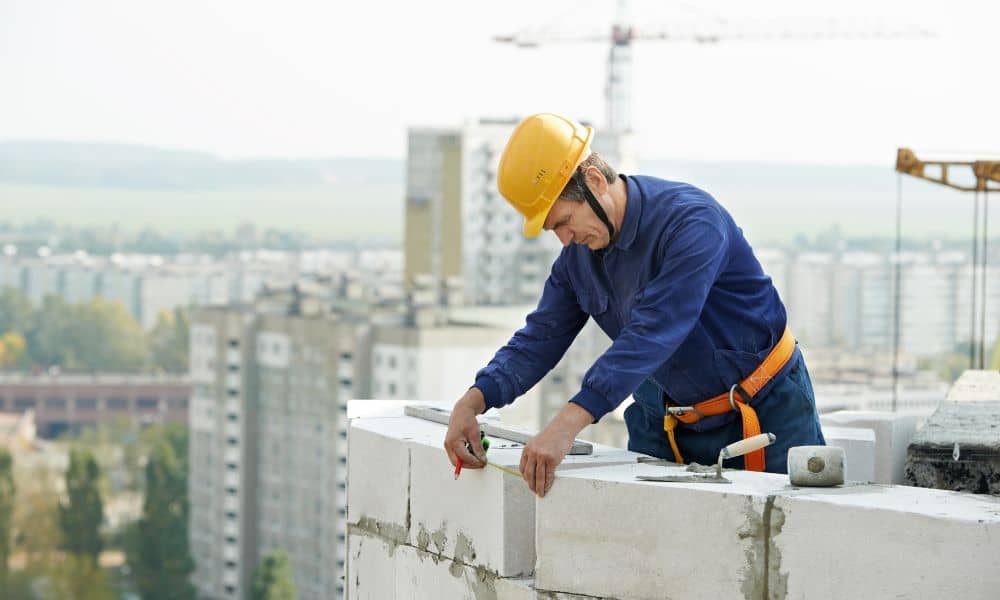
If you talk to any brick mason, they’ll tell you: every straight wall starts with an accurate line. Bricks don’t stack themselves. Crews depend on careful measurements, solid footing, and tools that keep everything square.
But this week, something unusual happened—something no one could control. The National Oceanic and Atmospheric Administration (NOAA) issued a solar storm watch, warning that bursts of energy from the sun could cause brief GPS signal problems across parts of the U.S.
That may sound far from a local construction concern, yet it affects everything from delivery routes to jobsite layout. When GPS accuracy drifts, even by an inch, it matters. And that’s when brick masons rely on the tools and instincts that have guided them long before satellites came along.
How the Sun Can Throw Off a Workday
A solar storm sends charged particles from the sun toward Earth. When they hit the planet’s magnetic field, they can interfere with signals—GPS, radio, and even some power systems. It’s a rare event, but it does happen.
For most people, that just means their map app might lag. But on a construction site, it’s a different story. Many crews use GPS-guided layout systems or survey rovers to mark foundation lines, locate footings, and set elevations. If those signals shift, a wall might start just slightly off—and “slightly off” in masonry means crooked joints or uneven corners later.
So, while the sky looked calm over Madison, the invisible space weather above made life a bit more complicated for crews trying to keep their lines perfect.
When Technology Wobbles, Skill Steps In
Today’s job sites mix high-tech equipment with century-old craftsmanship. Still, when GPS readings start to jump, nothing beats the human eye and a tight string line.
Experienced brick masons know how to check their layout by hand. They use total stations, plumb bobs, and chalk lines—the same simple tools that kept buildings square long before GPS existed. These methods take more time but guarantee accuracy when digital tools can’t be trusted.
It’s not about being old-fashioned; it’s about being ready. The best crews understand how to use technology as a helper, not a crutch.
What Happens on the Ground During GPS Glitches
When NOAA issues an alert, most local teams don’t panic. They adjust. Here’s what a typical day might look like when the signals get fuzzy:
- Crews double-check their control points using manual measurements.
- Layout lines are re-verified with string and level before any brick is placed.
- Deliveries might be delayed a few hours to make sure drop-off points are correct.
- Supervisors keep an eye on signal readings and switch back to GPS when it stabilizes.
To outsiders, it might look like a pause. To anyone in the trade, it’s called protecting the work. A wall that starts straight stays straight.
For Homeowners, a Short Delay Is a Sign of Care
If your project takes a brief break on a day like this, it’s not a problem—it’s good practice. When a brick mason stops to confirm measurements or alignment, it means they’re preventing bigger issues down the road.
A slight shift at the start of a project can create cracks or uneven joints months later. Taking time to verify every line means fewer surprises once the mortar sets. It’s the same idea as checking twice before cutting wood—except the stakes are heavier, literally.
So if you see crews using string lines and measuring tapes after a GPS alert, they’re not falling behind. They’re doing the right thing.
Madison’s Mix of Tech and Tradition
North Alabama is known for its technology sector, but it’s also a region with deep construction roots. Local masons understand both worlds. They use digital layout tools when they can, but they also trust the basics that never fail.
This balance is what makes the area’s craft strong. GPS and laser levels speed up projects, while hands-on techniques keep them precise. Even in a place shaped by space research and aerospace engineering, a good brick mason still carries a plumb bob in their toolbox.
It’s a reminder that no matter how advanced the tools get, masonry will always depend on skill and patience.
Looking Ahead
Solar storms don’t happen often, but they’re not the only challenge builders face. In Madison, crews deal with sudden rain, clay soil, and fast temperature changes. Adding “space weather” to that list just proves that construction is never predictable.
Yet, these moments highlight something important—the value of preparation. Crews that can adapt keep their work accurate and safe, no matter what happens above or below ground.
When technology falters, experience carries the job forward.
Final Thoughts
Every generation of builders adds something new to the craft. GPS and digital layouts have made construction faster and more precise. But events like this solar storm remind everyone why traditional skills still matter.
For brick masons, the job is about more than laying bricks; it’s about reading the environment, adjusting when needed, and making sure every wall stands true. Even when satellites lose their way for a moment, the people on the ground don’t.